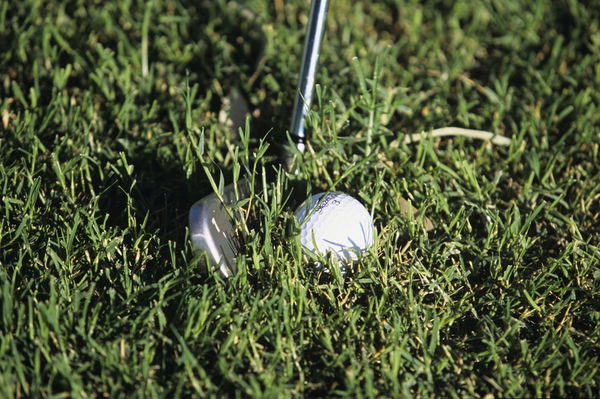Playing from the rough: five top tips
Adding two or three shots to your round every time you go in the rough? Follow our guide to cut out those unnecessary strokes

Playing from the rough isn't rocket science
Typical British weather – a mixture of incessant downpours and sunny spells – lead to a fast growth of rough and therefore problems for most golfers. Escaping from the rough is often a matter of degrees. To what degree you want to get yourself back in play and what degree of loft you should use to achieve it.
How deep is your ball in the rough and where is it in relation to giving you a reasonable chance to salvage your par (or nett par)? Should you throw caution to the wind and try to hack the ball as far as possible towards the green at the risk of finding even more trouble? Or should you perhaps take the cautious approach – get back on the fairway and start again from a better lie?
Two of the toughest shots from the rough are the 50 yard pitch from deep rough and the chip from deep rough. For instructional advice follow the links or check out our Toughest Shots series.
Playing from the rough is a case of balancing the risk with the likely rewards – or penalties. If, indeed, you’re lucky enough to find your ball in deep rough you have to consider if your have the right tools and the right technique to get your game back on track at one stroke or take your punishment, find the fairway and maybe drop only one or two shots in the process.
Very often inexperienced players will try to get away with using a club ill-suited for the purpose. It’s all very well opting for a 4- or 5-iron for a shot of 150-160 yards from a good lie, but not when it’s that the kind of distance you have to carry when facing a poor lie in rough grass.If, indeed, you’re lucky enough to find your ball in deep rough you have to consider if your have the right tools and the right technique to get your game back on track at one stroke or take your punishment, find the fairway and maybe drop only one or two shots in the process.
1. Use a lofted club
If the ball is buried deep in wet, clinging grass, take a club that has plenty of loft and is heavy enough to help cut through to the bottom of the ball – a pitching wedge of sand iron is often the best for this in your bag.
2. Find that fairway
Take the least amount of trouble out of the equation by aiming towards the most direct route to the short grass of the fairway. And remember, a ball played from heavy rough never carries as far as you think it might. So even if it means playing out sideways or even backwards it’s often a better option than trying to propel the ball over too much rough.
3. Open the clubface
Open the clubface – making allowance for the clubface to close or shut as it makes contact with the grass – and re-grip firmly. Position the ball toward the back of your stance and make a steep angle of attack as you strike down towards the bottom of the ball.
4. In medium rough risk a high-loft wood or hybrid
There are occasions when the rough is spindly but not so heavy, in which case you can often risk a high-loft wood or hybrid club but, again, slightly open the clubface before re-gripping and allow for a right to left flight as the club closes toward impact.
5. It’s deep, don’t lose sleep or weep
Remember if it’s deep, don’t lose sleep or weep over what might have been. Take your punishment and get back into play as soon as you can.
Want anymore tips? Check out our instructional guides to Golf’s Toughest Shots or our top Golf Practice Drills
Originally published May 2006, updated May 2013.
Sponsored Posts
Latest News











